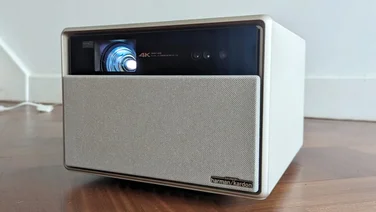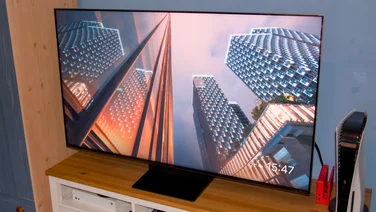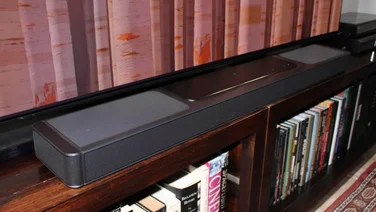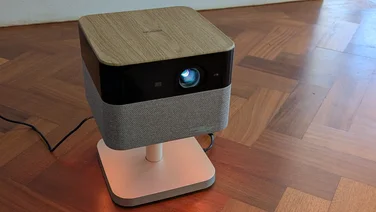To help us provide you with free impartial advice, we may earn a commission if you buy through links on our site. Learn more
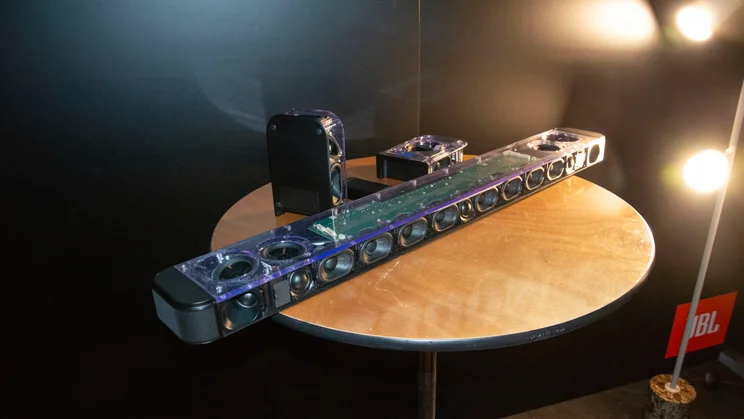
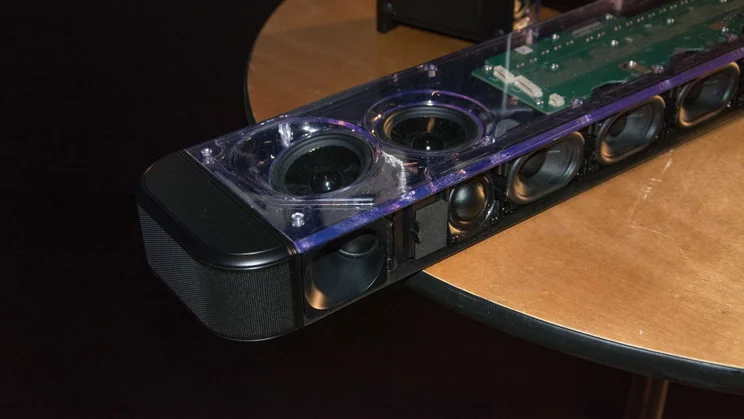
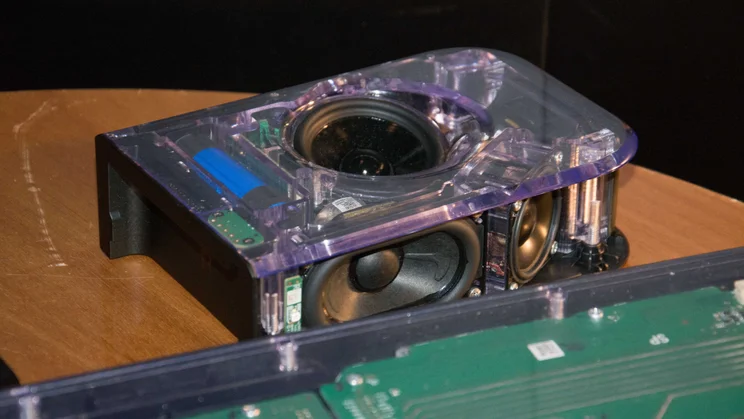
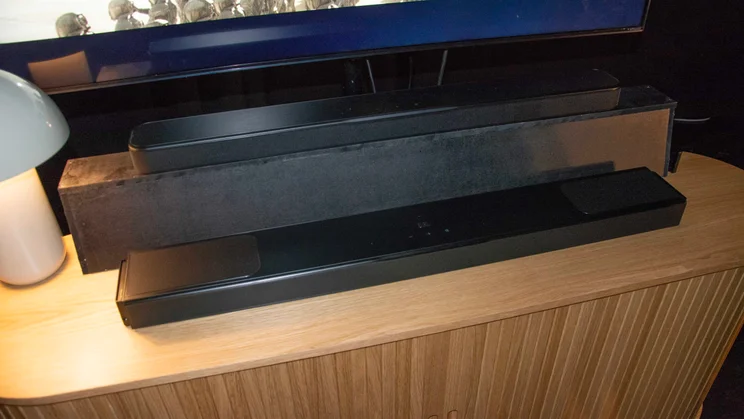
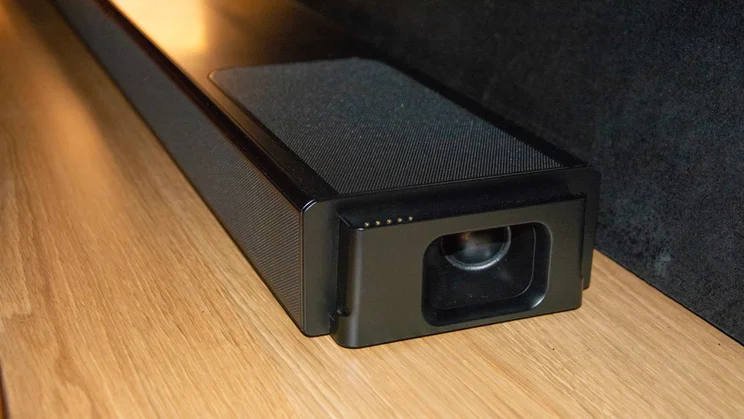
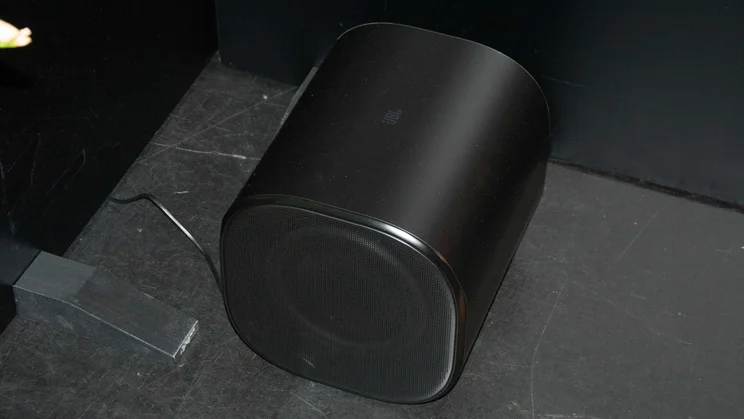
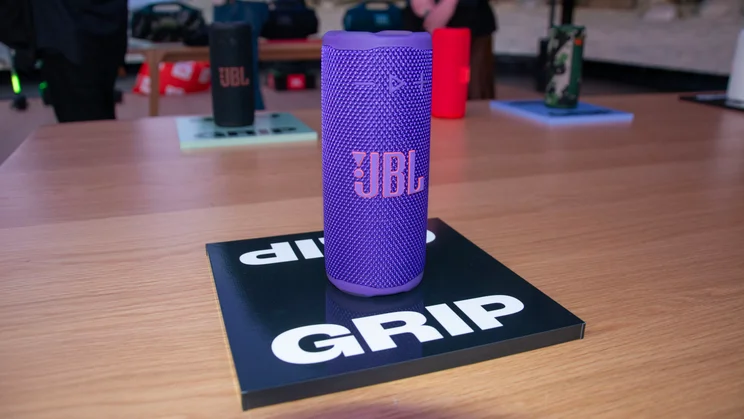
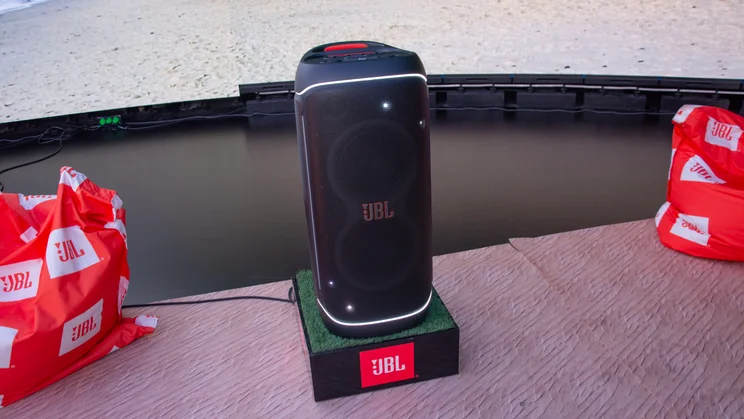
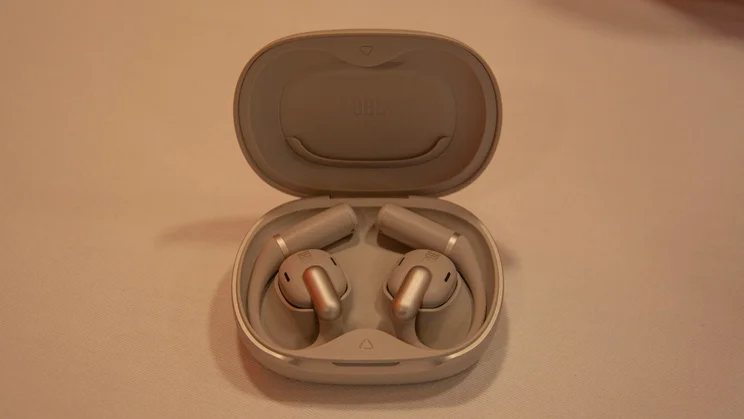
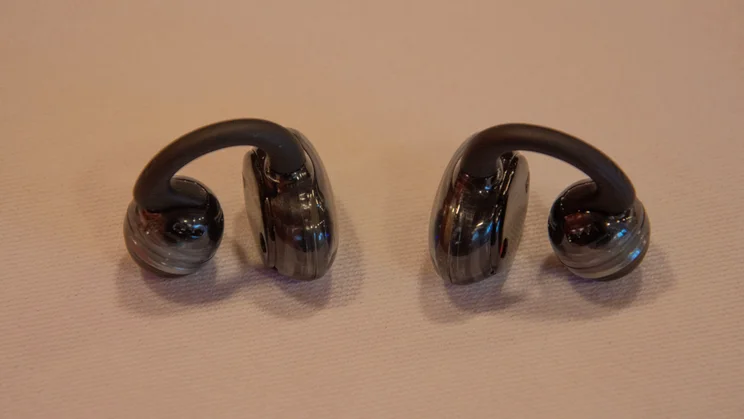
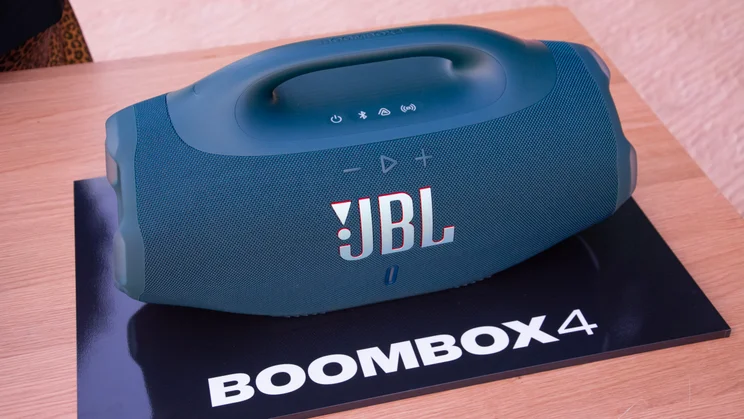
Four of the five new soundbars JBL announced back in June are already available in the UK, but the flagship JBL Bar 1300 MkII has been taking its sweet time to come to market.
It’s finally set for release this month, and to mark its imminent arrival, JBL hosted an exclusive event at Nordisk Film – the world’s oldest continuously active film studio – in Copenhagen.
While there, I had the opportunity to hear the Bar 1300 MkII in action, along with its second-generation stablemates, the JBL Bar 300 MkII (£350), JBL Bar 500 MkII (£500), JBL Bar 800 MkII (£800) and the JBL Bar 1000 MkII (£900).
I also got my hands on the JBL Soundgear Clips and JBL Sense Pro open-ear headphones, announced during JBL’s press conference at Gamescom, and enjoyed a unique Auracast audio experience with JBL’s newest Bluetooth speakers, the JBL Grip, JBL Boombox 4 and JBL PartyBox 720.
JBL Bar 1300 MkII: Initial impressions
I’ll discuss the various products and their specifications later, but first, I want to focus on the highly anticipated JBL Bar 1300 MkII. The original Bar 1300 received a glowing review from Stephen Withers, with the now-retired AV specialist praising the ingenious detachable rear speakers and immersive delivery. Both of those defining characteristics are back, but this update brings with it new features, AI assistance, and a whole heap more power.
Let’s start with the Bar 1300 MkII’s frankly ridiculous 2,470W power output. That’s more than double the 1,170W the first-gen model was able to pump out, and enough to knock my socks off, even in a film studio with high ceilings designed for recording sound rather than experiencing it. Most people won’t need anywhere near this kind of power, but if you are looking to kit out your home with a seriously loud and immersive surround sound soundbar, there aren’t many better qualified options.











The output is spread across eight racetrack drivers, seven tweeters, and four up-firing full-range drivers in the bar (970W), two racetrack drivers, a full-range driver and an up-firing driver in each of the detachable rear speakers (360W), and a dual 8in subwoofer capable of 1,200W.
To say the resulting 11.1.4-channel system packs a punch would be an understatement. An early scene in 2021’s Resident Evil: Welcome to Raccoon City was incredibly intense, with the explosion of a tanker truck and ensuing flames engulfing it articulated with visceral impact and spatial precision.











It was a similar story while watching a clip from Dune. The subwoofer delivered weighty, throbbing bass I could feel deep in my chest, while the rear speakers, located to the left and right behind the sofa I was sitting on, created a keen sense of sand being whipped up and around me from the desert landscape. Dialogue remained clean and directed from the centre of the TV the bar was positioned beneath, and the soundstage was knitted together adeptly.
As I mentioned above, this is not the kind of system designed for a small living space: there, it will be overkill. But the sheer scale of its presentation makes it ideal for those with large home theatre rooms, who want to avoid building a surround sound system comprising separate speakers.
JBL Bar 1300 MkII: New tricks
And the Bar 1300 has some neat tricks up its sleeve, too. The detachable, rechargeable rear speakers, which have a stated battery life of up to ten hours, can be used as Bluetooth speakers independently of the bar, and can also be put into “Broadcast” mode to change their surround signal into stereo or mono, allowing you to listen to what’s on the TV in another room.
Additionally, there’s a new Night Listening mode. When engaged, this turns off the soundbar and subwoofer and plays audio solely through the rear speakers, which will ideally be located near your listening position. They’ll then produce an intimate bubble of sound for you to enjoy a more personal audio experience without worrying about upsetting your neighbours or waking your housemates. I only got a quick taste of the mode, but it worked effectively and is a pleasingly subtle tool to have in what is an otherwise unapologetically beefy system.











On the AI front, the Bar 1300 uses JBL’s AI Sound Boost technology in its subwoofer to reduce distortion at high volume levels, and gains AI assistance from a digital LLM-trained helper accessible via the JBL One app. The idea is to bring the expertise of an audio engineer to your living room and provide real-time advice on the functionality of, and best settings for, your soundbar.
Other noteworthy elements include support for both Dolby Atmos and DTS:X, Pure Voice 2.0 for crisper dialogue, and Smart Details for enhancing the reproduction of more subtle audio cues such as footsteps. The bar also comes with Harman’s Multi Beam 3.0 technology, which uses angled drivers to bounce soundwaves off your walls to increase the soundstage’s breadth.
The rest of the JBL Bar MkII range
A lot of these aren’t exclusive to the Bar 1300 MkII. All five of JBL’s new soundbars support Multi Beam, Pure Voice and Smart Details. But only the Bar 1300 and Bar 1000 Mk II have the upfiring drivers that allow them to articulate Atmos and DTS:X height effects in a truly authentic fashion, with the other three relying on virtualisation to communicate height effects.
The other big differences lie in the number of channels and power output. The Bar 1000 MkII is a 7.1.4-channel system with a total output of 960W, while the 7.1-channel Bar 800 is rated at 780W.











The Bar 500 is almost as powerful (750W) but does without the detachable rear speakers and is limited to 5.1-channel sound. At the bottom of the range, the Bar 300 is a 450W 5.0-channel soundbar that drops the 10in subwoofer that accompanies the three models above it.
The range offers plenty of choice for consumers, and although I wasn’t as blown away by the Bar 300 MkII and Bar 800 MkII as I was by the Bar 1300, I was still impressed when I experienced them in demos. The former handled the opening sequence of No Time To Die – often used to show off Atmos credentials – pretty well, while the latter did justice to the action-packed trailer of Ready Player One.
JBL Soundgear Clips and JBL Sense Pro
I didn’t get the chance to listen to JBL’s two new pairs of headphones, the Soundgear Clips and Sense Pro, but I did get to try both on. They’re comfortable, well-specified and relatively competitively priced at £120 and £160, respectively. Whether they’ve got the audio chops to oust the Shokz OpenDots One and Shokz OpenFit Pro 2 as our favourite open-ear headphones remains to be seen, though.











The final demos of the day took place in the magnificent Shortcut LED Stage, the world’s first 360-degree LED stage, measuring 16m in diameter and featuring the walls and ceiling completely covered with LED panels. Those panels depicted a beach environment as JBL set the kind of party scene its trio of new Bluetooth speakers are designed for.
Bluetooth speakers to get the party started
First up was the JBL Grip, a slim, Coke can-sized speaker that sits beneath the exceptional Flip 7 in the brand’s portable range. It’s available now in seven colours, is rated IP68 for dust and water resistance, can output 16W RMS and has a battery life of up to 14 hours. It also incorporates a handy light, which can be customised in the JBL Portable app. It’s bound to be a smash hit with an affordable price of £90, and JBL says it expects sales of 1 million units a year.











I’ve got one in for testing already, and love how compact it is. Early indications suggest it’s a strong performer for its size, too, although its full-range racetrack driver is perhaps a little light in the bass department. Keep an eye out for my full review in the coming weeks.
The Boombox 4 is the latest iteration of JBL’s ghetto blaster-style speaker: it’s 1kg lighter than its predecessor and kicks out 210W RMS. At £449, it isn’t a cheap option, but its rugged, durable build and hefty output identify it as a potent, portable party starter.











I was also treated to an assault on my senses courtesy of the new JBL PartyBox 720. Upgrades to the PartyBox 710 include larger wheels for easier and more consistent transportation and a change to the size of drivers used to redistribute its 800W output. You have two 150W tweeters paired with two 250W woofers, and that extra low-end emphasis was immediately evident in the demo session. I enjoyed the light show created by the speaker’s LED array, too, while budding musicians and karaoke lovers will dig the wide selection of inputs.
The other big change for this model is the ability to buy it with or without external batteries. If you choose to opt for the version with two six-cell batteries, you can use the PartyBox 720 away from the mains for up to 15 hours, although it will cost you €199 (UK price TBC).











One final thing to mention is that all three of JBL’s new speakers support Auracast, and I got the best demonstration of this technology I’ve had to date at the event. On my request, the JBL representative activated Auracast on every speaker in the room (six Boombox 4s, three PartyBox 720s and around 15 Grips) and maxed out the volume on a hard-hitting techno track. The result was a thunderous and thoroughly enjoyable synchronised sonic experience that would likely have been a match for any Copenhagen nightclub.


